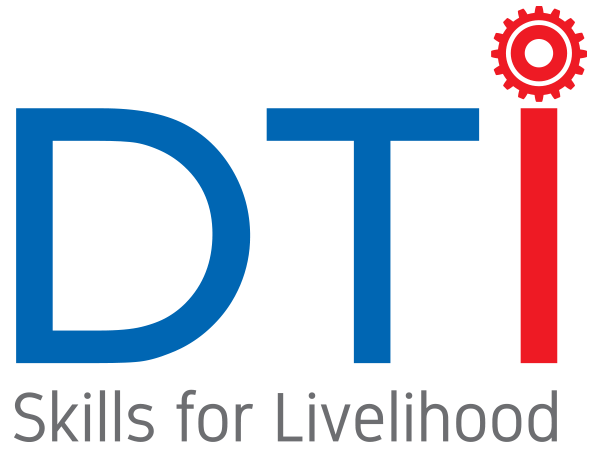
PLC
| Course Title | PLC Advance Training with Multiple Control Systems(S7-1200) including HMI and SCADA |
| Duration of Course | 4 weeks |
Course Introduction
This course is for Electrical/Electronics/Mechanical/Mechatronics Engineers and Diploma holder. A person having knowledge about Digital Logic Design is Eligible for this training on Programming Logic Controller. There will be emphasis on the hardware and software interface of PLC. This course aims to provide a strong foundation for students to excel in Control and Automation field.
Learning Objectives & Outcomes
The main goals of this course are listed below:
- Learn the basics about PLCs
- Familiarity with different Control Systems
- Designing of Complex Systems using Ladder Logic
- Analog Control and its Monitoring and Wiring of PLC
- Designing of HMI and SCADA with Control and Monitoring Attributes
- VFD control with PLC
- Troubleshooting Techniques
- HMI Designing
- SCADA Designing
By the end of this course, students should be able to do industrial level projects, Troubleshooting and Maintenance involving Programming Logic Controller
Course Contents
Overview
1. Automation
2. Control Systems
3. Programmable Logic Controllers
4. Ladder Logic
5. Industrial Applications
6. Scope of the work
Historical Background
1. Relay Logic
2. Integrated Circuits
3. Microcontrollers
4. Microprocessors
5. Programmable Logic Controllers (PLCs)
a. First PLC 1969
b. Programming Consoles for early PLC’s
c. Ladder Logic Programming
Introduction to PLC 1. What is PLC?
2. PLC Manufacturers
3. PLC Architecture
4. PLC Categories
5. PLC Programming Languages
a. Ladder Logic
b. Statement List (STL)
c. Function Block Diagram (FBD)
SIMATIC Family
1. SIMATIC Controllers
2. SIMATIC Net
3. SIMATIC HMI
4. SIMATIC SCADA
5. SIMATIC PCS
6. SIMATIC PC/PG
7. SIMATIC Manager
SIEMENS PLC Family
1. Step-5
2. Step-7
a. LOGO
b. S7-200
c. S7-300
d. S7-400
e. S7-1200
f. S7-1500
SIEMENS S7-300/S7-400 Programmable Controller
1. Structure of the Programmable Controller
2. Components
3. Slot Rules
4. Module Addresses
5. Slot Address
6. Logical Address
7. Addresses for bus Nodes
8. Communication
9. SIMATIC Manager
SIEMENS S7-1200 Programmable Controller
1. Structure
2. Central Processing Units
3. Digital Modules
4. Analog Modules
5. Communication
6. Power Supplies
7. Software
Parts of Automation
1. Switches
2. Transmitters
3. Encoders
4. Relays
5. Valves
6. Motors and Drives
7. Sensors and Actuators
Programming Software
1. SIMATIC Manager
2. TIA Portal
3. Creating and Editing Project
4. Hardware Configuration
5. LAD Program Editor
6. PLC Simulator
7. Online Mode
8. Testing LAD
Introduction of Ladder Logic
1. Basics of Relay Logic
I. Mechanical Switches
II. Proximity Switches
III. Operating Principle of a Control Relay
IV. Time-delay Relays
2. Basics of Digital Logic Design
3. Truth Tables
4. Logic Gates
5. Basic Parameters
I. Normally Open Contact
II. Normally Close Contact
III. Output Coil
6. Softwiring, Branches, and Rungs
7. Digital Logic to Ladder Logic
8. I/O addressing
9. Internal I/Os
10. Ladder design in the editor
11. Run Program in Simulator
12. Latching
Timers
1. General Representation of a Timer
2. Starting a Timer
3. Specifying the Duration of Time
4. Reseting a Timer
5. Checking a Timer
6. Pulse Timer
7. PEXT Timer
8. On Delay Timer
9. Retentive On-Delay Timer
10. Off-Delay Timer
11. IEC Timers
12. Practical examples using timers
13. Lab Assignment
Problem Solving Methods 1. Analytical Thinking
2. Problem solving approach
3. Data Acquisition
4. Algorithm Design
5. Symbol Table
6. Program Documentation
7. Archive/Retrieve
Extended Instructions
1. Set coil
2. Reset coil
3. Positive edge operand
4. Negative edge operand
5. Lab assignment
Counters
1. Programming a Counter
2. Setting and Resetting a Counter
3. Basic types of PLC counters
I. Up Counter
II. Down Counter
III. Up/Down Counter
4. IEC Counters
5. Lab assignment using counters
Basic Analog
1. Memory Concepts
2. Processing the Move Box
3. Moving Operands
4. Moving Constants
5. Data Conversion Methods
6. Analog addresses
7. Analog Simulation
Basic Functions
1. Comparator operations
2. Arithmetic Operations
3. Conversion Operations
Introduction to HMI
1. SIMATIC Panels
2. WinCC versions
3. Elements and Basic Settings
4. Screen Basics
Programming & Designing HMI
1. Working with templates
2. Tags
3. Objects
4. Text Lists and Graphic Lists
5. Layers
6. Libraries
7. Faceplates
8. Indicator and Control Objects
9. Screen Navigation
10. Alarms
Communication of HMI with PLC
1. Compiling and Loading
2. Simulating Projects
3. Communication with PLC
4. Network and Connections
5. Commissioning Projects
Advance Analog – I
1. Analog Modules
2. Signal Types
3. Industrial Standards for analog signals
4. Analog to Digital Conversion
5. Digital to Analog Conversion
Advance Analog – II
1. Scaling (Fun 105)
2. Unscaling (Fun-106)
3. Normalization
4. Analog Handling with S7-1200
Instrumentation
1. Wiring Configurations
I. 2-Wire
II. 3-wire
III. 4-wire
2. Transmitter Types
I. Voltage
II. Current
III. Resistance
3. Temperature Sensors
4. Pressure Sensors
Advance Analog – III
1. Instruments calibration with PLC
2. Error Handling
3. Instruments Calibration
4. Industrial Problems
Overview of Some Other Brands
1. Mitsubishi
2. Fatek
3. Wientek
Soft Skills
1. Interview skills
2. Presentation skills
3. Interpersonal Skills
4. Career Consoling
Automation of an industrial project.
Applications Hardware
VFD control with PLC Through Analog IO’s
Conveyor Control through PLC
AC Motor Control with PLC
Interfacing of Encoder with PLC
Interfacing of Sensors with PLC
Compact and Modular PLCs
Outstanding S7-1200 PLC training KITs and S7-300 PLC Training KIT,
For Programming Point of View
More than 50 Programming Applications will be included in this Course.
